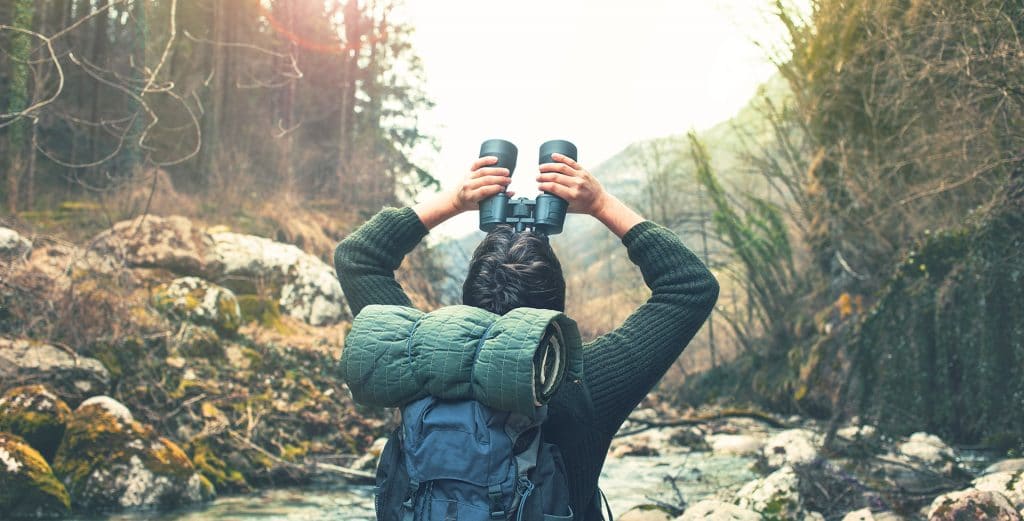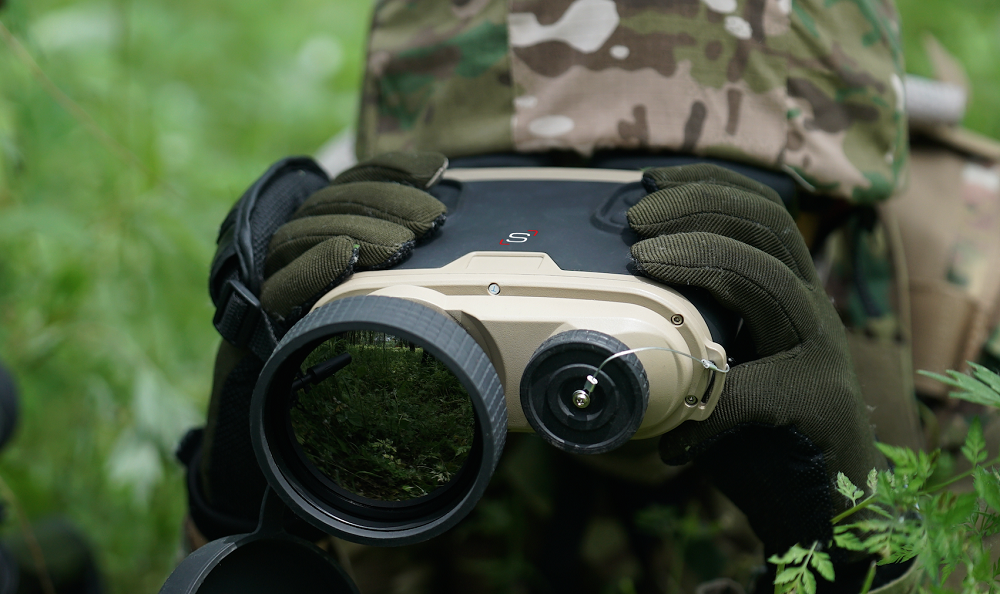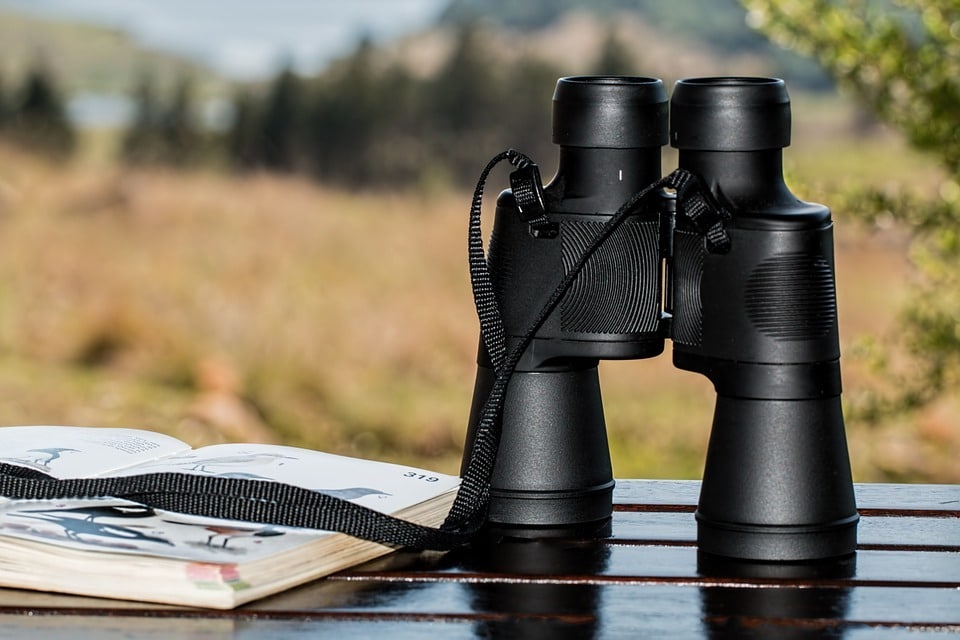

Glasses are used for a range of different eye conditions and diseases, from genetic conditions to situational accidents. Prescription glasses are a common and widely used solution for most people. Sadly, it’s difficult to combine glasses with really anything else that goes above one’s eyes. This is especially true for outdoor adventures that require masks, oxygen intake, and of course, binoculars.
The process of how to use binoculars with glasses can be confusing to many intermediate and beginner users alike. It can be frustrating to continue an activity that uses binoculars while wearing glasses. While wearing glasses, this can compromise focus while physically straining the user’s eye. That’s not productive, nor is it healthy. But it’s not impossible to make it work.
Having a vision that’s not 20/20 isn’t as common as you’d think. Nearly 75% of adults use some sort of vision correction devices such as glasses or contacts, according to
The Vision Council.
Trusted Source
Fact sheet
The organization serves as a resource to the public looking to learn more about options in eyeglasses
and sunglasses by providing the latest in eyewear trends, advances in technology and advice from
eyewear experts.
www.thevisioncouncil.org
About 64% of them wear eyeglasses, while only 11% wear contact lenses instead of glasses. Since this is a common ailment, it’s not a surprise that many of the binocular user community also have to wear glasses.
The most common Trusted Source Global Prevalence of Myopia and High Myopia and Temporal Trends from 2000 through 2050 Myopia is a common cause of vision loss, with uncorrected myopia the leading cause of distance vision impairment globally. Individual studies show variations in the prevalence of myopia and high myopia between regions and ethnic groups, and there continues to be uncertainty regarding increasing prevalence of myopia. www.aaojournal.org reasons that people have glasses as well as some common types of prescription glasses. Farsightedness, nearsightedness, astigmatism are common syndromes that can be solved by using Bifocal, trifocal, varifocal glasses, and Progressive lenses. This helps to narrow down whether or not the viewer is able to or can remove their glasses while using the binoculars.
Some people are able to see quite well and easily without their glasses. Other people aren’t able to, and either require glasses or a replacement such as contact lenses. There’s nothing wrong with wearing contact lenses while using binoculars. If that’s the case, it’s simple to continue using binoculars while wearing contact lenses.
There’s nothing you can’t do when using binoculars, even when wearing glasses. Having glasses doesn’t disqualify you from using or enjoying binoculars. All of the options for hunting, butterfly watching, sightseeing, whale watching, and so much more are available to you. For example, bird-watching has become a very popular sport among binocular aficionados. Some of the best bird-watching binoculars include brands such as Nikon, Zeiss, Bushnell, Vortex, and Celestron.
Attempting to make binoculars work while wearing glasses is a tedious and frustrating task, but it’s very worth it. There are amazing sights to behold through the eyepiece of a binocular. There are accessories that can be bought and features that can be incorporated into the original design for a flexible model.
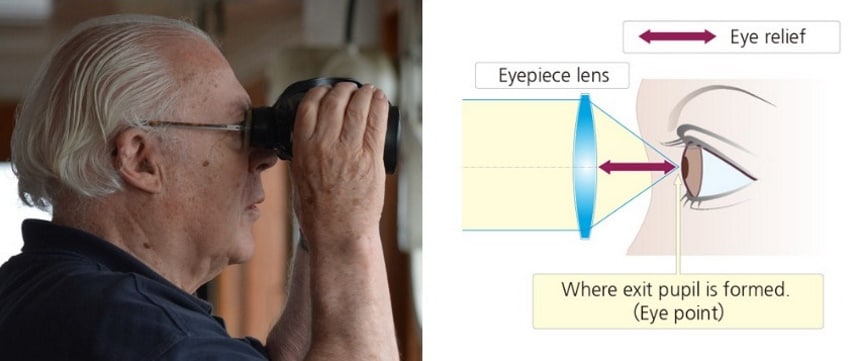
In general, compact binoculars provide a great advantage of being slightly smaller with a longer distance of eye relief. Many compact models you can use while wearing your glasses because you can easily tune the focusing system to account for your eye prescription. The best compact lenses on the market currently also provide that feature of eye relief, but they can range.
The ideal length of eye relief is 16mm or more. Many binoculars typically measure 14 to 15 mm as the standard distance. However, with glasses, longer is better. These added mm allow for extra eye relief to easily view through the binoculars without straining your eyes. Although 16mm is the suggested size, it’s important to measure your glasses for how far they protrude from your face.
The H2O Binocular from Bushnell provides the user with a 17 mm eye relief alongside its waterproof material, multi-coated optics, and large center focus knob for simple and fast adjustments. This would make an ideal pair of binoculars for anyone wearing glasses or even monocles.
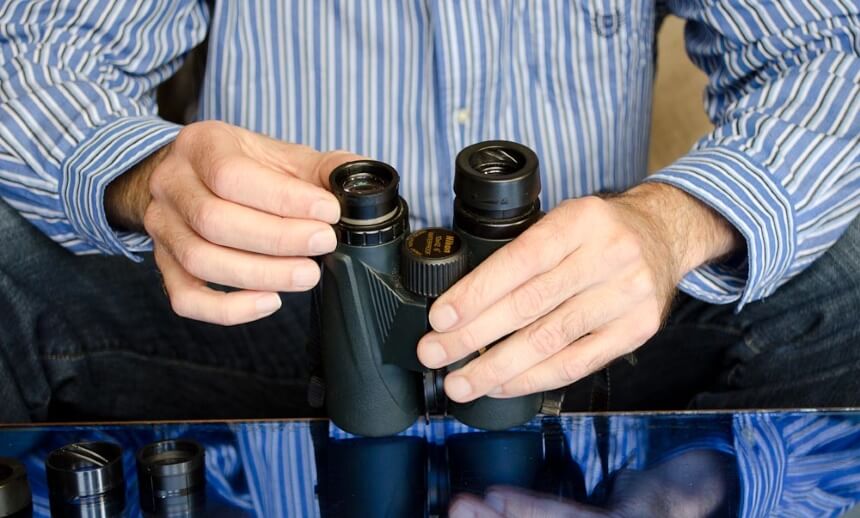
Eyecups are helpful by stopping and blocking any peripheral light. That light can and will mess with the images seen with your binoculars. Normally this isn’t as important as the eye goes right against the binocular lenses. With a pair of prescription glasses in the way, it’s much harder to do so.
The type of eye relief cups that your binoculars can use has been an important aspect. Depending on the style you choose, it will pose a slightly different experience of looking through your binoculars as a glass wearer. Right now, there are two designs out on the current market, including fixed-focus designs and twist-up designs.
Fixed-focus designs are one of the most well-known kinds. This is common in both Older and cheaper binoculars that have a fixed-focus design. It has rubber cups that can be simply folded down to adjust the eye relief distance. This is a great model to view an image clearly without any shifting shadows or vignettes.
The twist-up design is a modern twist on the fixed focus classic. This is a more modern design of the eyecup. Improved with a new design, the twist-up kind of eyecup is much sleeker and more streamlined, and flexible. The adjustability is done by multiple stops of clicks in the twist design.
Regardless of the type of eye relief cups you use, they’ll be able to help block peripheral light from the sides of your view. The two different styles are an important part to consider when purchasing a set of binoculars. Each of these styles has its benefits and drawbacks. There are always more options being created by binocular tinkerers and connoisseurs.
Picking the right set of binoculars relies on several different aspects. These features include magnification, lens diameter, and so many more. There’s also a price to consider. Binoculars can range from as affordable as low as $50 and as expensive as thousands of thousands of dollars. There are many different types of binoculars that aren’t very expensive. These are ones that comfortably fit in the average person’s budget. Some are even under $100. each of them combines to find the pair of binoculars that work for you.
Setting up a set of binoculars can be difficult, but there are simple steps to follow. All you need to start with is a set of binoculars that are attuned to your specific needs and preferences. With a pair of binoculars chosen, now it’s time to set up the binoculars to get them ready to go. It’s adventure time!
Although it sounds like a weird tip, make sure to twist your eyecups and your eye relief while setting up the gear. It’s a way to not only encourage flexibility but take advantage of the flexible material.
First of all, look through your binoculars with your glasses on to make sure everything fits properly and comfortably. This is a great chance to adjust both the binoculars or the glasses to find a comfortable fit. Practice and pretesting often get overlooked, but it’s one of the most underrated steps.
make sure to check for vignetting before you head out. Vignetting is when there is an e blacking out of the edges of an image looking through binoculars. This is caused when the eye relief distance and length are too short. An easy fix is to merely extend the eyecups until the vignetting around the edges stops. Then the relief distance is sufficient.
Wearing glasses as a necessity instead of convenience or a fashion statement provides a conflict when it comes to using binoculars. Outdoor adventures can be difficult, to begin with, never mind having difficulty using some of the equipment, but that’s not a hopeless problem. This is certainly accurate for activities that use binoculars or any form of telescope.
If you wear glasses, you may ask, what’s the point of using binoculars? It most certainly is worth it. There are many different sights to see and explore that aren’t limited just because of prescription glasses. Explore Nature with the proper gear and witness the world.
Whether you’re hiking up a mountain, or traveling throughout a river valley, make sure the binoculars you choose are the best choice. With the information on how to use binoculars with glasses, it’s much easier to go on an adventure outdoors. Share a selfie with us to show you rocking both glasses and binoculars!

